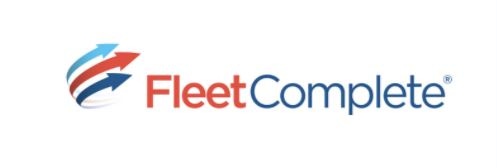Fleet Complete launches LTE-M asset trackers for FirstNetFleet Complete launches LTE-M asset trackers for FirstNet

Fleet Complete has announced that the company’s wired and solar-powered LTE-M asset trackers have been approved for use on FirstNet, allowing the small senor devices to access the prioritized connectivity via the nationwide public-safety broadband network (NPSBN) being built by AT&T.
Brent Dutka, Fleet Complete’s vice president of business development, said the AT1 Wired and AT1 Solar asset trackers—featuring sensors that identify location, as well as measuring temperature, humidity, light, impact and motion, according to the company—have been proven in the commercial markets.
“Fleet Complete has been selling asset trackers for many, many years, so the organization and the audience isn’t new to this technology,” Dutka said during an interview with IWCE’s Urgent Communications. “The nice thing is that these departments within the public sector … are able now to utilize them on FirstNet.”
William Stovall, AT&T’s vice president of mobility and IoT, echoed this sentiment.
“We’re excited about the growth of LTE-M for FirstNet and to collaborate with Fleet Complete to offer their LTE-M for FirstNet Asset Tracker,” Stovall said in a prepared statement. “This gives first responders and the extended public-safety community that supports them visibility into critical assets such as generators, trailers, and essential equipment to help them be more efficient and stay safe during everyday operations and emergency response.”
Fleet Complete is not new to FirstNet, as the company’s fleet-tracking system was one of the first applications showcased by AT&T officials when the carrier giant was named as the FirstNet Authority’s partner in the massive public-safety broadband project. The AT1 Wired and AT1 Solar will let primary and extended-primary public-safety entities monitor the location and status of a wide variety of assets beyond vehicles, Dutka said.
“Customers need other options when it comes to assets that are in the field,” Dutka said. “Common use cases are in a disaster situation. If it’s a natural disaster and they’re deploying generators, trailers, food supplies and water supplies, a lot of these departments have relied on paper [forms] to identify where the assets were being deployed and were in need of having some [indication of] physical presence in a digital way of where my asset is and how often is it moving. Is that generator on or off? And what is the fuel consumption on that generator?
“So the reporting capabilities are almost identical to a vehicle, from a tracking perspective. Now, anything that you can slap this on and track it, or bolt it down to a trailer, you have some visibility to that particular asset.”
Location data and telematics information from the asset trackers will be accessed through the same Fleet Complete software platform that many users have used for year, although the newer products will support “richer experiences” for those using the portal, according to Dutka.
“I think what’s unique about this experience is that—because LTE-M for FirstNet is so new—is that you’ve got both hardware and software that have gained technical acceptance,” Dutka said. “We’ve kind of put the whole package together and not just the module that we’re selling to manufacturers for this particular use case.”
Dutka said that entities using the Fleet Complete asset trackers on the FirstNet system will pay $6.75 per month for each device to subscribe to the Fleet Complete web portal. In addition, a data plan is needed, although the 1 MB plan costing $1.25 per month is “more than enough in most scenarios we see,” according to Dutka.
“The [solar] device itself is priced at $81, and the hard-wired [version] is $95,” he said. “As you can imagine, when we get into situations where they’re buying multiple devices, our margins will loosen up—we’ll get competitive in those situations.”
There is no technical limit on the number of asset trackers that an entity can use simultaneously, and Fleet Complete is seeing a wide variety of requests, Dutka said.
“We have large customers out there that are pricing anywhere between 12 and 20,000 of these devices in the field,” Dutka said. “We have departments that are bringing on 500 at a time, based on known future disaster scenarios. They’ll keep them on hand and prepare for any asset that needs to be deployed—whether its hurricane season or wildfire season—just to make sure that they’re ready and prepared.”





_Zoonar_GmbH_Alamy[1].jpg?width=700&auto=webp&quality=80&disable=upscale)